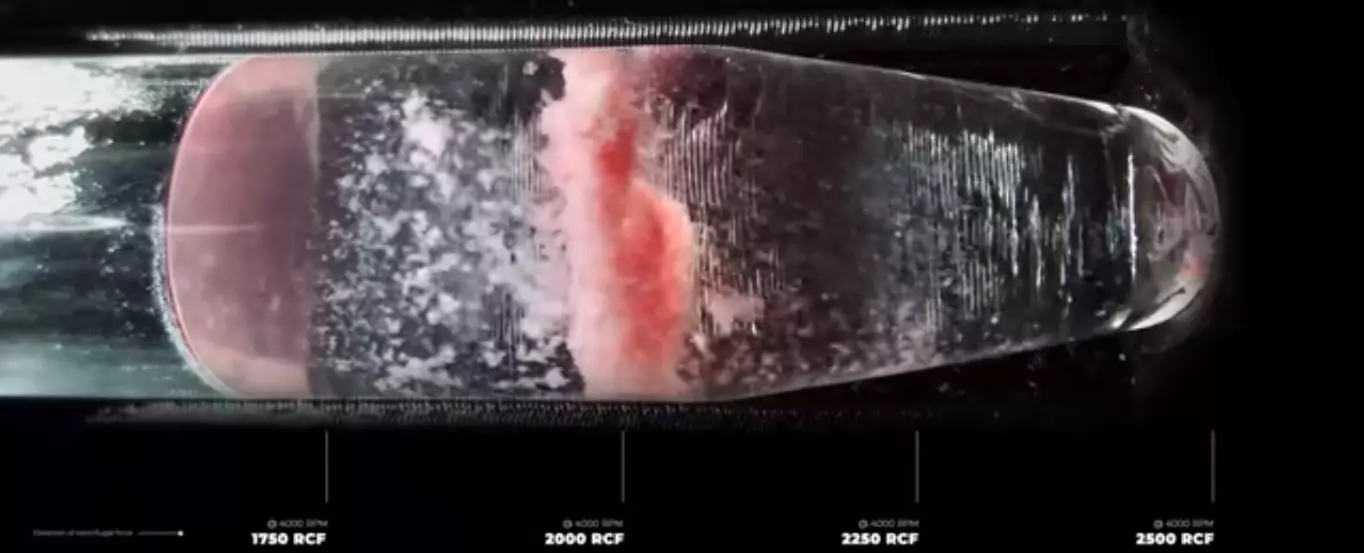Centrifugation has long been a vital tool in scientific research, but the inner workings of this powerful machine have remained a mystery – until now. Thanks to the ingenuity of Maurice Mikkers, a lab technician-turned-scientific photographer, we now have a camera that offers a mesmerizing view into the world of centrifugation. What’s more, this innovative device provides unprecedented insights into fluid dynamics. With countless potential research applications, from physics and genetics to food science and wastewater treatment, the centrifuge camera opens new doors for scientific exploration.
Before delving into scientific photography, Mikkers worked at the Dutch National Institute for Public Health and the Environment as a lab technician specializing in parasite diagnostics. Throughout his time there, he had extensively used centrifuges. However, the processes occurring within the machine fascinated him, and he yearned to witness them firsthand. In an essay published on Medium, Mikkers shares his experience, stating that while he was aware of the “pre-centrifuge” and “post-centrifuge” samples, he had never witnessed the actual separating process. Determined to capture these elusive moments, Mikkers devoted months to overcoming technical challenges and rigging a digital camera to withstand the tremendous forces exerted by the centrifuge.
Centrifuges operate by rapidly spinning fluids, generating intense centrifugal forces. The particles in the fluid respond differently to these forces, depending on their density. Consequently, the components separate into distinct layers, with the denser matter being pulled towards the outermost point. This separation technique has diverse applications, such as blood sample analysis, DNA extraction, and genetic research. It plays a fundamental role in mapping genomes, detecting pathogens, and understanding the genetic basis of physical traits.
Mikkers’ camera not only captures the expected separation processes but also reveals surprising fluid dynamics in certain substances. For instance, the camera exposes the mesmerizing swirls of shower gel under the influence of 2500 g-force. These unexpected visualizations offer valuable insights that were previously unattainable. The footage has attracted the attention of fluid physicist Alvaro Martin from the University of Twente, who included Mikkers’ videos in a presentation on culinary fluid dynamics. Martin expresses astonishment at the level of motion observed in the videos, emphasizing their significance to fluid dynamicists.
Centrifuges have even found their way into the realm of food science. Mikkers’ videos have fascinated experts in the field, prompting further explorations of the possibilities offered by centrifugation. Alvaro Martin notes that the footage from the centrifuge camera challenges conventional understanding of separation motion due to the significant amount of motion observed. With this newfound capability to visualize the intricate processes occurring during centrifugation, research in genetics, physics, and other disciplines can move forward in innovative ways.
Mikkers and his collaborators are taking the leap beyond conventional applications of centrifugation. They are currently working on a project called “Sludgecam” in collaboration with rheologist Lorenzo Botto from Delft University of Technology. Sludgecam aims to apply centrifugation technology to recover valuable resources from wastewater sludge. By observing what happens inside a lab-scale centrifuge during the spinning process, researchers can gain crucial insights that will help optimize wastewater treatment processes, biotechnology, and food processing industries. It presents an exciting opportunity to transform an unpleasant byproduct into a valuable resource.
The development of the centrifuge camera marks a groundbreaking achievement in scientific visualization. It provides scientists with a window into an otherwise hidden realm, unlocking new possibilities for research and innovation. From unraveling the secrets of genetics to revolutionizing wastewater treatment, this technology has the potential to transform multiple fields. As Maurice Mikkers continues his exploration of the scientific world through photography, we eagerly anticipate the fascinating discoveries that lie ahead.

Leave a Reply